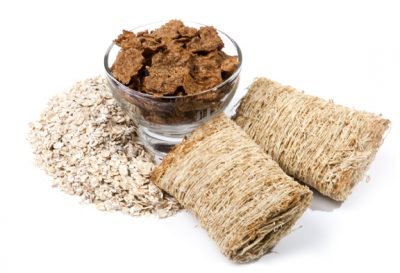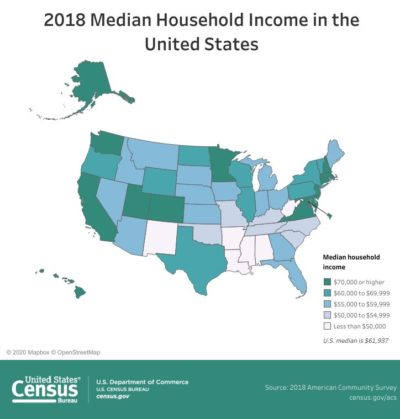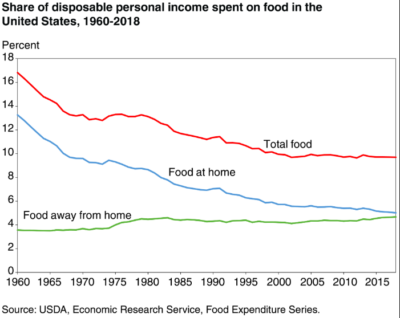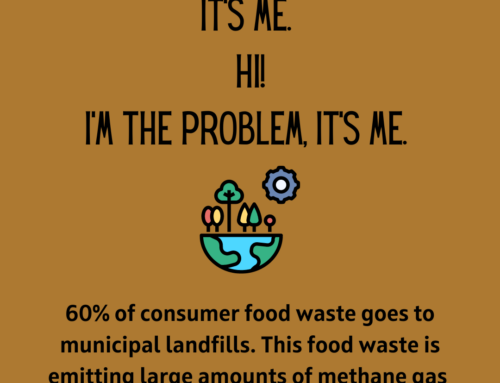Fiber can help with digestive health, blood sugar control, and in reducing cholesterol. Did you know that grain foods offer a significant amount of fiber to a healthy diet? This is one reason they should be included in your diet along with other fiber sources (fruits, vegetables, beans and legumes). Grains help you reach your daily fiber need (25 grams a day for women, 38 grams a day for men).
Most fruits and vegetables provide 2 to 5 grams of fiber per serving, while half cup of beans provides 6 grams. A cup of barley however provides 9 grams, and a cup of brown rice provides 5. Bran cereals provide the most fiber at 8 grams per serving; oatmeal and other whole grain cereals can provide about 4 to 6 grams per serving.
Cereal is a convenient, inexpensive source of fiber and other nutrients but…
Some People Really Don’t Like Cereal
I recently posted my article about the affordability and nutrition of cereal on LinkedIn. It got a lot of engagement, much of it negative. Many consumers viewed cereal as a nutritionally poor choice. Some think it’s not even safe to eat. Complaints were about sugar content, GMO ingredients, and concerns about glyphosate residue. Some went as far as to question my expertise, experience and education.
Here are a few of the comments on the post:
“I rarely find good sugar free non GMO cereals without additional additives on the shelves.”
I don’t recommend you let absence claims lead your food shopping.
“How can you consider that source of vitamins meeting the requirement? It is the lowest quality source of vitamins. What is your expertise in nutrition? I do not understand how a nutrition writer does not have a basic knowledge of vitamin sources and how their solubility is compromised depending on the source.”
Wow. Whether your iron comes from a beef steak, a soybean, a pill, or a bowl of cereal – it’s Fe. The “best source” of vitamins or minerals are the ones you can afford to eat, and will actually eat. Meeting dietary requirements varies by population and nutrient.
“All commercial cereal is terrible for you. Every single item in the aisle. Don’t believe in nutrition facts , the vitamins are enriched after the fact and sourced from the worst possible chemical sources. The grains are the worst GMO quality…”
Okay…Well, there is no GMO wheat or oats on the market. There is GMO corn however, and most cereals made with corn are using GMO corn, unless labeled otherwise. Nutrients added via enrichment, are still nutrients, and, all food is chemistry.
“I guess you missed the news release about glysophate in cereal from the EWG. Their test results found glyphosate, a known carcinogen, in virtually every oat based cereal they tested.” (note, glyphosate misspelled)
I guess you missed the the National Academies of Science report.

That’s a lot to unpack right? Let’s start with sugar.
Sugar
Too much sugar in the diet isn’t a good thing, but this doesn’t mean you have to follow a completely sugar free diet. Everyone knows what a “sugary cereal” is. Yet sugar does make fiber more palatable. I’ve always recommended that you mostly choose cereals that have <10 grams of sugar per serving, and I stand by that reasonable guideline.
There are cereals that have way less than that 10 grams per serving. Some have 1 or less gram of sugar per serving.
GMOs
There is nothing wrong with GMO corn. This debate should be over, since the National Academies of Science determined the safety of GM crops years ago. Think of genetic modification of plants is simply a modern plant breeding process. Instead of having to spend years with traditional hybrid breeding (which modified genes “naturally”) through trial and error, plant scientists can no modify the one specific gene that will provide the desired results.
Other cereals may contain a GMO sweetener, like the sugar beet. I’ve written extensively on the safety of GMOs before. However, regardless of the scientific consensus, consumers continue to have concerns. The amount of sugar in the product is definitely worth noting, but whether or not the sugar is from sugar beets, doesn’t really matter, especially since there is little to no genetic material left from the plant when it becomes pure sucrose (genetic material is only found in proteins, and sugar syrups from sugar beets or corn contains no protein).
Glyphosate
Glyphosate is a commonly used agricultural herbicide. According to toxicologists, it is one with the least amount of health risk, and it’s important to keep in mind that it’s not used directly, but is an ingredient in other weed control products. However due to high profile lawsuits with the Monsanto/Bayer company, and recent reports from the Environmental Working Group, it’s become a hot button.
There is a lot of disagreement between what farmers actually do and the validity of EWG methods (their benchmark for glyphosate residue is 100 times lower than the EPAs). In many parts of the country (North Dakota, Minnesota, Kansas and the Southern Plains), oats and wheat are harvested in the dry summer, so they don’t use drying agents.
Truth is, glyphosate is widely considered one of the safest (least toxic) herbicides. It certainly requires proper application and caution for use.
Enrichment
In addition to the fiber, cereals are enriched. Enriched grains provide important nutrients that have a significant role in public health. Many provide 90% of the Daily Value for iron, 50% of your folic acid needs, as well as other B vitamins and minerals like potassium and calcium. I would bet that the person who downplayed this enrichment of cereals would likely not think twice about taking a multivitamin or other supplement. Bottom line – enrichment is a good thing.
Is Cereal Safe to Eat
This brings us to the main question the LinkedIn commenters raised – is cereal safe to eat?
Yes.
There is no way to completely remove yourself from risk. There is no one diet pattern that will guarantee you mortality or perfect health, but what you choose to eat can impact your health and overall well being. Thing is, in the U.S., we are lucky to have lots of good choices.
Affordability and Nutrition
Interestingly, while income has increased, Americans are spending a smaller percentage of it on food. Compared to 1960 when an average of 16.8 percent of income was spent on food, Americans only used 10.1 percent of their income on food in 1998. This fell further by 2018. According to the USDA,
“In 2018, Americans spent an average of 9.7 percent of their disposable personal incomes on food—divided between food at home (5.0 percent) and food away from home (4.7 percent). Between 1960 and 1998, the average share of disposable personal income spent on total food by Americans, on average, fell from 16.8 to 10.1 percent, driven by a declining share of income spent on food at home.”

Is it nutritious? Yes. Keep in mind you’ll want to look for cereals that:
- Contain <10 grams of sugar per serving
- Have 4 grams, or more, of fiber
Will you sometimes enjoy cereal that is higher in sugar and lower in fiber? Sure. But you want to keep that to an occasional, not daily or weekly, bowl.
The main point of my post about cereal‘s affordability factor, was to help people understand that price and nutrition matter. An enriched grain food like cereal fits into many food budgets, and it’s a food product that provides an array of nutrients (especially when eaten with milk and a banana or berries). It’s affordable, and nutritious, with the potential to improve the diet quality for many children and adults.
Disclosure: General Mills sends me free samples of new cereals from time to time, but I do not have an employee nor consulting relationship with them. My family does happen to enjoy their cereals, as well as cereals from other brands.





